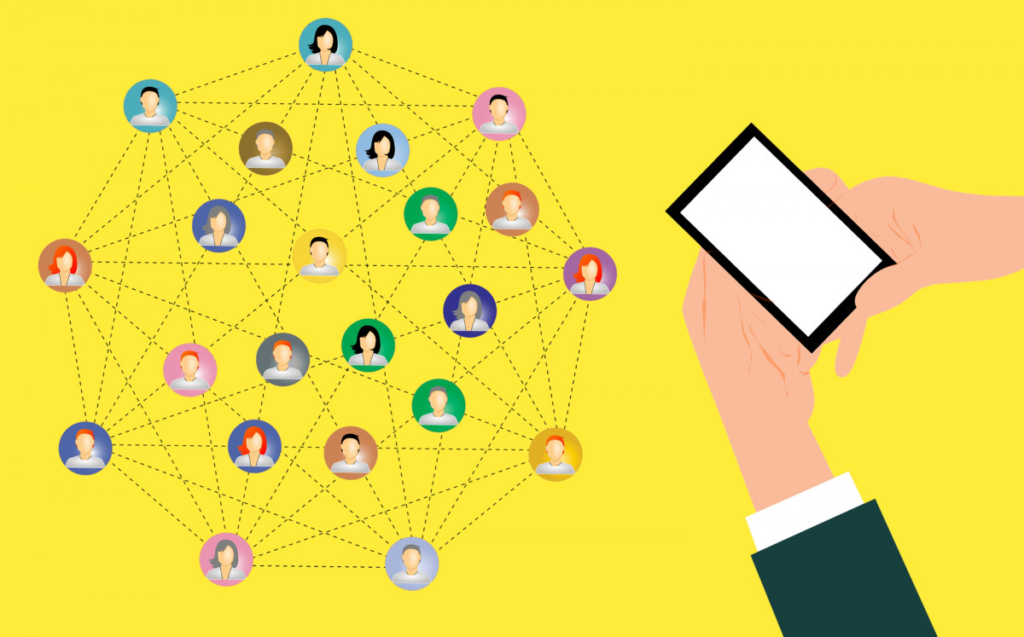Introduction
As technology continues to evolve, the demand for skilled networking professionals remains high. If you’re preparing for a Top Networking Interview Questions in 2024, it’s essential to be well-prepared and familiar with the latest industry trends. In this article, we will discuss some of the Top Networking Interview Questions in 2024 you may encounter.
Top Networking Interview Questions in 2024
What is the Networking?
Networking refers to the practice of connecting various computing devices together to share resources and information. It involves the use of hardware and software to enable these devices, such as computers, servers, routers, switches, etc., to communicate and exchange data. Networking allows devices to share files, access the internet, use printers, and more. It can be done locally within a small area (LAN – Local Area Network) or over larger geographical distances (WAN – Wide Area Network), and it forms the backbone of communication in the digital world.

1. What is Software-Defined Networking (SDN)?
SDN is an architectural approach that separates the control plane from the data plane in networking devices. It allows network administrators to programmatically control and manage the network infrastructure using software applications. Explain the key concepts and benefits of SDN, such as centralized control, network automation, and improved scalability.
2. Can you explain the difference between IPv4 and IPv6?
IPv4 and IPv6 are two different versions of the Internet Protocol. IPv4 uses 32-bit addresses, limiting the number of available IP addresses, while IPv6 uses 128-bit addresses, allowing for a significantly larger address space. Discuss the reasons for the transition from IPv4 to IPv6, the advantages of IPv6, and the challenges involved in the migration process.
3. What is Network Function Virtualization (NFV)?
NFV is a network architecture concept that virtualizes network services traditionally performed by dedicated hardware devices. It enables the deployment and management of network functions, such as firewalls, routers, and load balancers, as software-based virtual instances. Explain the benefits of NFV, such as increased flexibility, scalability, and cost savings.
4. How does Quality of Service (QoS) impact network performance?
QoS is a set of techniques used to prioritize network traffic and ensure that critical applications receive the necessary bandwidth and latency requirements. Discuss the different QoS mechanisms, such as traffic classification, queuing, and traffic shaping, and their impact on network performance and user experience.
5. What are the key components of a Virtual Private Network (VPN)?
A VPN provides a secure connection over an untrusted network, such as the internet. Explain the key components of a VPN, including encryption protocols, authentication methods, and tunnelling protocols. Discuss the advantages of using a VPN, such as enhanced security, privacy, and remote access capabilities.
6. How does Dynamic Host Configuration Protocol (DHCP) work?
DHCP is a network protocol used to automatically assign IP addresses and other network configuration parameters to devices on a network. Explain the DHCP process, including the DHCP discovery, offer, request, and acknowledgment phases. Discuss the benefits of using DHCP, such as simplified network management and efficient IP address allocation.
7. Can you explain the concept of VLAN (Virtual Local Area Network)?
A VLAN is a logical grouping of devices within a network, regardless of their physical location. Discuss the benefits of using VLANs, such as improved network performance, enhanced security, and simplified network management. Explain how VLAN tagging works and the different types of VLANs, such as port-based VLANs and protocol-based VLANs.
8. What is the difference between a router and a switch?
A router and a switch are both networking devices, but they serve different purposes. Explain the primary functions of a router, such as routing packets between different networks and maintaining routing tables. Discuss the primary functions of a switch, such as forwarding data packets within a local network based on MAC addresses.
9. How does Spanning Tree Protocol (STP) prevent network loops?
STP is a network protocol that prevents loops in Ethernet networks by creating a loop-free logical topology. Explain how STP works, including the election of a root bridge, the calculation of the shortest path to the root bridge, and the blocking of redundant paths. Discuss the benefits of STP in terms of network reliability and redundancy.
10. Can you explain the concept of Network Address Translation (NAT)?
NAT is a technique used to translate private IP addresses into public IP addresses and vice versa. Discuss the different types of NAT, such as static NAT, dynamic NAT, and port address translation (PAT). Explain the benefits of using NAT, such as conserving public IP address space and enhancing network security.
11. What are Nodes and Links?
Node: In networking, a node typically refers to any device or data point on a larger network. This could be a computer, server, printer, switch, router, or any other network-capable device. Each node has a unique address and can send, receive, or forward data across the network.
Links: Links, also known as connections or communication links, represent the physical or logical connections between nodes in a network. These links facilitate the transmission of data between nodes. Links can be wired (e.g., Ethernet cables) or wireless (e.g., Wi-Fi, Bluetooth), and they establish the pathways through which information travels across the network.
12. What is the Network topology?
Network topology refers to the arrangement, configuration, or layout of a computer network. It defines how different devices or nodes are connected and how data is transmitted between them. There are various types of network topologies, each with its own characteristics, advantages, and disadvantages:
- Bus Topology: In a bus topology, all devices are connected to a single communication line (bus). Data is transmitted along this bus, and each device receives the data; however, only the intended recipient processes it. It’s a simple layout but can suffer from issues if the main bus encounters problems.
- Star Topology: In a star topology, each device is connected directly to a central hub or switch. All data passes through this central point, making it efficient and easy to manage. If one connection fails, it doesn’t affect the rest of the network.
- Ring Topology: Devices in a ring topology are connected in a closed loop, where data travels in one direction. Each device receives and transmits data until it reaches the intended recipient. Failure in one device can disrupt the entire network.
- Mesh Topology: In a mesh topology, every device is connected to every other device in the network. This redundancy provides multiple paths for data transmission, ensuring reliability. However, it requires more cabling and can be complex to manage.
- Hybrid Topology: Hybrid topologies are a combination of two or more different types of topologies. For instance, a network might combine elements of star and mesh topologies to achieve specific objectives.
13.Define the 7 different layers of the OSI Reference Model
The OSI (Open Systems Interconnection) Reference Model is a conceptual framework that standardizes the functions of a telecommunication or computing system into seven distinct layers. It was developed by the International Organization for Standardization (ISO) to facilitate communication between different systems by providing a structured approach to network communication protocols. Each layer serves a specific purpose and encapsulates different aspects of network communication:
- Physical Layer (Layer 1): This layer deals with the physical transmission of data over the network medium. It defines specifications for hardware devices and transmission media, including electrical, mechanical, and functional characteristics. It covers aspects like cables, connectors, signaling, and data rates.
- Data Link Layer (Layer 2): The data link layer handles the reliable transmission of data frames between nodes over a physical link. It performs functions like framing, error detection, and flow control. It ensures that data is delivered error-free across the physical layer.
- Network Layer (Layer 3): The network layer is responsible for establishing, maintaining, and terminating connections across the network. It deals with logical addressing, routing, packet forwarding, and traffic control. Protocols like IP (Internet Protocol) operate at this layer.
- Transport Layer (Layer 4): This layer manages end-to-end communication between devices. It ensures reliable and transparent data transfer, handles error correction, flow control, and segmentation or reassembly of data. TCP (Transmission Control Protocol) and UDP (User Datagram Protocol) operate at this layer.
- Session Layer (Layer 5): The session layer establishes, manages, and terminates communication sessions between applications. It facilitates dialog control and synchronization between devices, allowing them to communicate by setting up, maintaining, and tearing down sessions.
- Presentation Layer (Layer 6): This layer is responsible for data representation, translation, and encryption. It ensures that data is presented in a format that the application layer can understand. It handles data compression, encryption, and formatting.
- Application Layer (Layer 7): The application layer provides interfaces for network applications to access network services. It allows software applications to communicate with the network, offering various protocols and services directly to end-user applications.
The OSI model serves as a guideline for designing and understanding how different networking protocols and technologies interact across a network. While actual networking protocols may not strictly adhere to this model, it provides a conceptual framework to comprehend the complexities of network communication.
Conclusion
Preparing for a Top Networking Interview Questions in 2024 requires a solid understanding of the latest industry trends and technologies. By familiarizing yourself with these Top Networking Interview Questions in 2024, you’ll be better equipped to showcase your knowledge and skills to potential employers. Remember to not only focus on the technical aspects but also emphasize your problem-solving abilities and communication skills. Good luck with your networking interview! and Continue Preparing for Top Networking Interview Questions in 2024
You might also like:
networking interview questions


7 thoughts on “Top Networking Interview Questions in 2024”
Comments are closed.